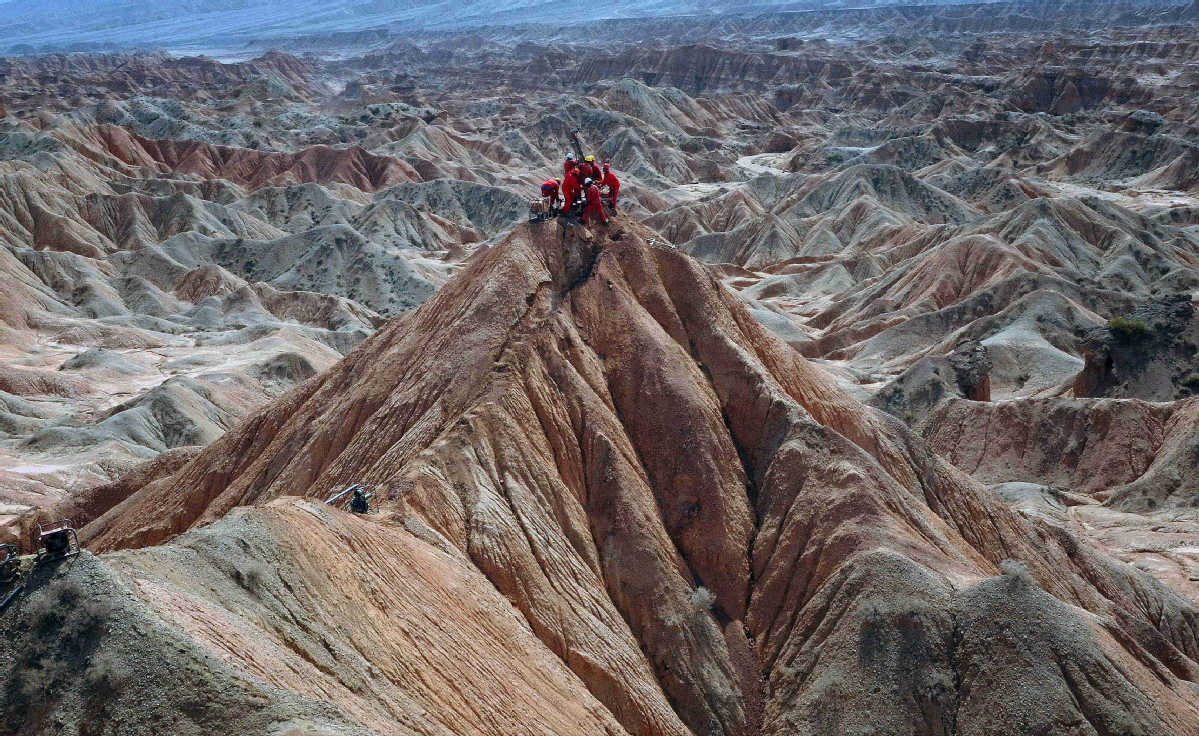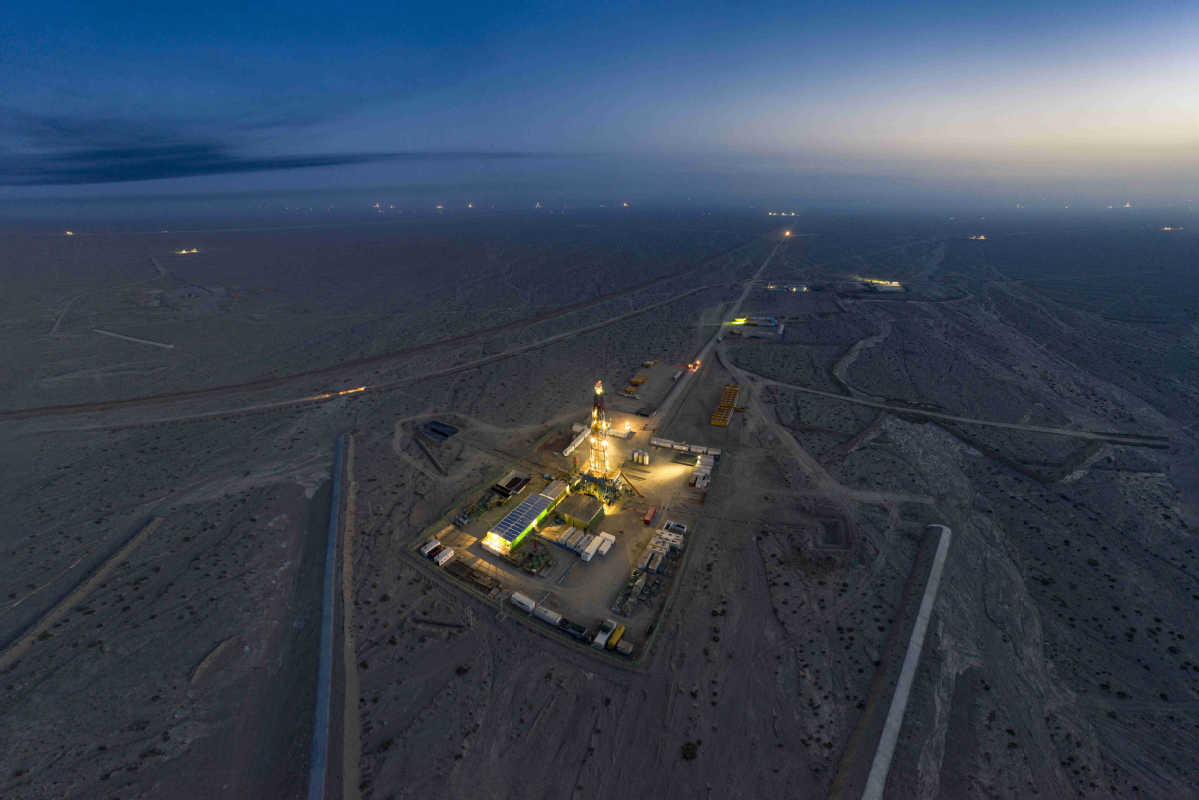'Lone Ranger' paves roads for oil explorers in Xinjiang


URUMQI-Braving rolling sand dunes in the Taklimakan, China's largest desert, Hu Jun carefully operates a roaring bulldozer to blaze a trail that his co-workers and supplies can use to reach oil exploration sites.
Dubbed the "Sea of Death", the desert is located in the Xinjiang Uygur autonomous region, which is known for its harsh landscape, thus posing huge challenges to the exploration endeavors.
The mission involves multiple time-consuming processes including geophysical surveys and systematic investigations of the geology beneath a designated piece of land. Hu's job plays a pivotal role in the arduous task.
"The very first step in the survey effort is to build simple roads in the desert, but sandy winds sometimes hinder our efforts," said Hu, 48, who works for the State-owned China National Petroleum Corp.
Hu is responsible for building roads connecting the scattered exploration sites with the help of GPS. Called the "Lone Ranger" by his co-workers, he has to forge ahead through dunes to consolidate soft sand into roads as part of his daily tasks.
Geophysical surveys are tough but extremely important. Major oil and gas breakthroughs have been made in many parts of the desert.
The CNPC's Tarim Oilfield has recently found an area that is capable of producing 525,000 cubic meters of natural gas and 1,610 cu m of oil per day in the north of the desert.
China produced 188.8 billion cu m of natural gas and 195 million metric tons of crude oil last year, up 9.8 percent and 1.6 percent, respectively, year on year, according to the National Bureau of Statistics.
However, the supply of oil and gas holds more potential in the desert. The Tarim Oilfield churned out 30.8 million tons of oil equivalent last year and has set a production target of over 40 million tons for 2025.

Located about 300 kilometers from the nearest county seat, the camp where Hu and his co-workers live is marred by the absence of cellphone networks.
"Despite being monotonous and tough, my job is meaningful," Hu said, smiling with pride.
Since October, Hu and some 300 colleagues have completed preparations for data collection covering an area of more than 200 square kilometers.
Their relentless efforts have paid off. With the help of geophysical survey workers, 32 large-and medium-sized oil and gas fields have been developed in the Taklimakan area by the oilfield over the past three decades. The cumulative proven oil and gas reserve hit 2.77 billion tons, contributing more than 400 million tons of oil equivalent to the country.
"We have a strong spirit of perseverance," Hu said. "No matter how hard it is, the road is right under our feet."
Xinhua
























